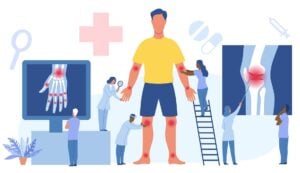

Clinical trial sites in Australia provide valuable and meaningful contribution to their local and surrounding communities by way of providing access to novel and compelling therapies for a variety of disease states. The value to customers, such as sponsors and CRO’s is addressing a geographical-based necessity for clinical trial data in a professional, efficient and reliable way that is cost-effective. This is through access to an underrated and relevant target population, effective recruitment and provision of data excellence.
Research site advantage in the clinical trials marketplace is a combination of medical specialty, trial diversity expertise and both real and potential capability that appeals to target populations. There are few industry benchmarks or guidelines for site performance best practice therefore it remains a site responsibility to develop systematic benchmarks of their own and build a business that fosters meaningful relationships with consumers and attracts ongoing trial opportunities as a function of efficiency, competitiveness and reputation.
There is no secret to developing and expanding an investigative site, the requirements involve a conscientious identification of subjective and objective criteria that highlight the opportunities for growth and the supporting controls needed to reinforce developmental phases. Effective site operation creates a capacity to achieve essential objectives of dynamic protocol requirements and forms a culture of service delivery excellence.
Globally, and in Australia the standard infrastructure to support the advancement of trials is often only developed for a specific trial, project or in a manner determined by the trial sponsor to be of most effect. Understandably efforts to develop a reliable and effective infrastructure for clinical trials have been limited in scope, often narrowing focus on issues of investigator or patient recruitment and these endeavours have not translated into harmonised national or international effect, regardless of therapy area. The result of this ongoing disharmony of clinical research structures is that the landscape is bereft of productive and mature clinical trials sites, with sufficient experienced staff, and established procedures that also have access to large numbers of patients with a specific disease states of research interest.
A growing exception to these ongoing problems is those trials performed by cooperative groups or other organised research frameworks such as site networks. Although challenges within such collaborative systems undoubtedly exist, implementation of recognised initiatives both at the site and national levels may offer promise for reinvigorating the clinical trials landscape while promoting rapid advancement in field of medical research. By making well-known and predictable infrastructure improvements that promote efficiency, network sites and physicians will be able to better serve patients by translating basic scientific discoveries into clinical care. Less experienced research investigators and institutions may gain unique access to processes and trial support consultation, enabling use of well-established clinical trial methodologies and quality management principles. By providing broad access to clinical research expertise, a network can conduct both small and large-scale clinical trials in real-world settings, evaluate unique populations, and further understand the consequences of specialist interventions.
The most obvious way a network may aid clinical research in Australia is increasing efficiency in the clinical trials development process. A coordinated and systematic approach that makes best use of limited resources and keeps pace with rapidly advancing scientific discoveries in the field of pain research offers a unique and potentially powerful means of trials conduct. Development of an explicit and transparent national clinical trials network management framework may potentially increase access to clinical trials for multiple stakeholders. For example, training and engagement of less-experienced investigators who practice in settings that are relevant to the research questions being addressed may improve the applicability of the results to the issues being studied. Patient access to clinical trials may also be improved by taking advantage of non-traditional means for awareness and enrolment, such as digital platform convergence and the use of coordinated social media.
Elements of an optimal pain neuromodulation clinical trial would network include:
Reasonably expected benefits of a such a pain neuromodulation clinical trial network could include:
Dom Bailey
View our currently recruiting studies:
Register your interest for future studies:
© Genesis Research Services, 2023